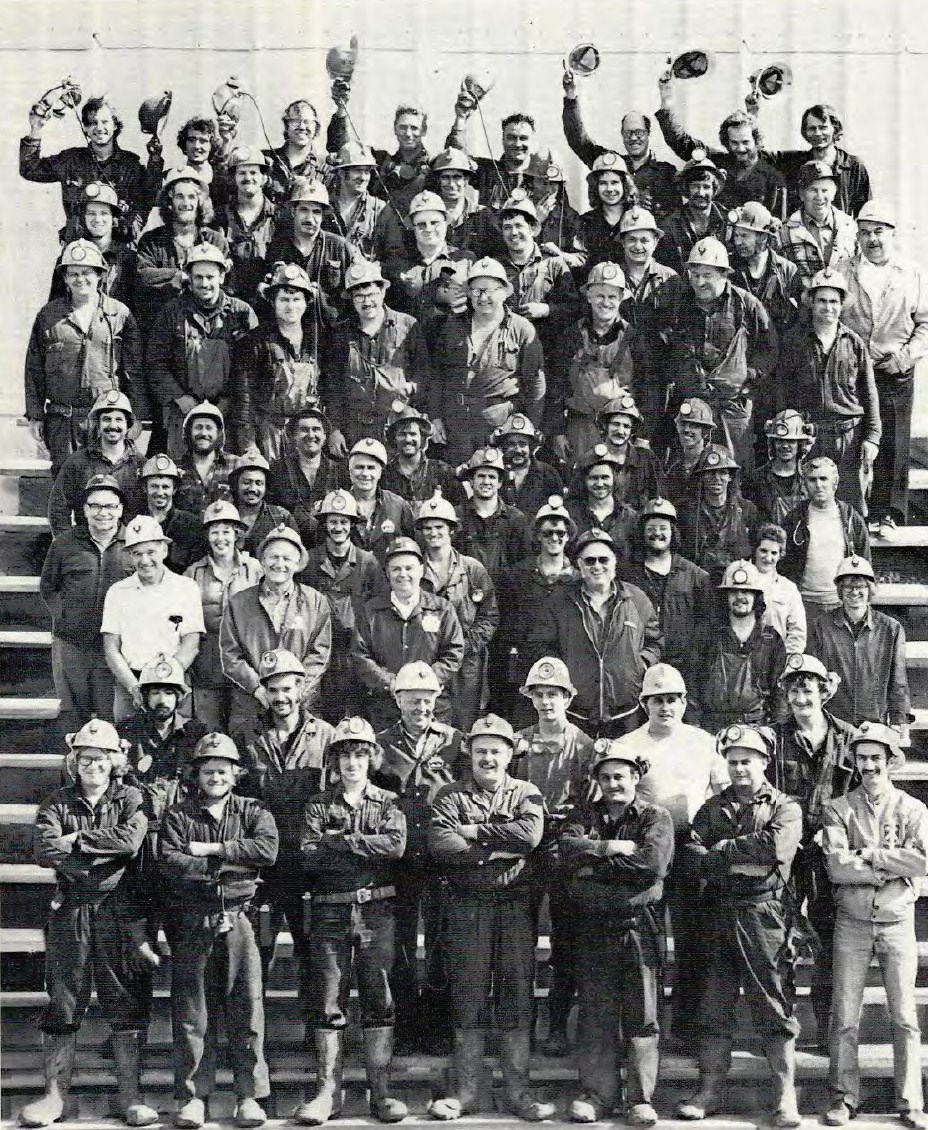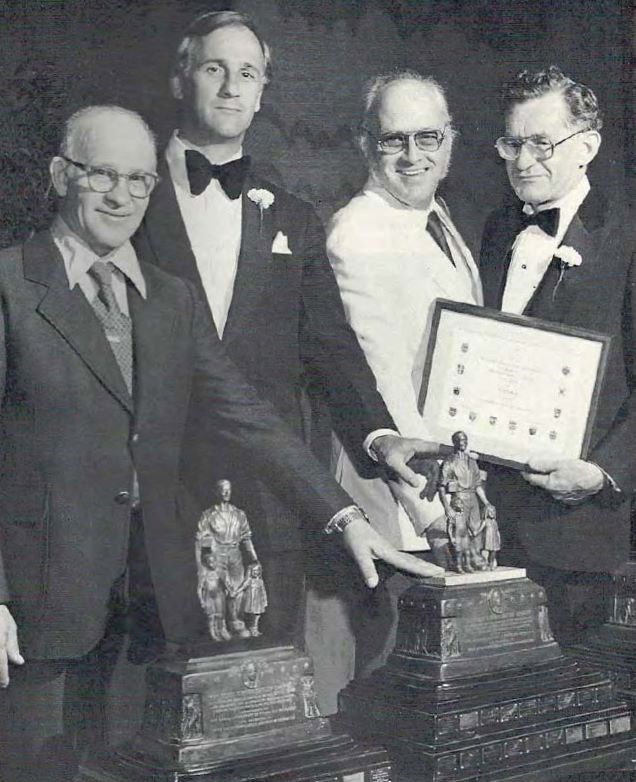The Snow Lake area has a long history of mining and an excellent background in respect to the safety practices which have evolved with the industry. In a trade where people are working with heavy machinery, explosives, low levels of light and sometimes rock hanging precariously around them, safety is an issue and it’s always a concern. As a result of their concentration on safety, numerous Snow Lake mine rescue teams have either won or been in the running during provincial competitions and one mine, Photo Lake, went it’s entire mine life without a lost time accident. A lost time accident (LTA) is a mining accident of a serious nature, when an employee is unable to return for his or her next shift because of injury.
On that front Snow Lake mines have won the John T. Ryan Canada Trophy for safety performance four times since the first time it was presented as an award in 1941.
The John T. Ryan is awarded by Mine Safety Appliances Canada Limited as a memorial to the founder of the company. The trophies are presented by the Canadian Institute of Mining and Metallurgy and Petroleum (CIM) to mines which in the previous year experienced the lowest reportable injury frequency per 200,000 hours worked in Canada.
The Ryan award was won three times by the New Britannia Mine; in 1997, 1998, and 2004. However in 1979, Chisel Lake and Ghost Lake mines, which were two adjacent, past producing HBM&S mines in the Snow Lake area, received the John T. Ryan Canada Trophy for their safety performance over the three calendar years prior to ‘79. It was the first time that a Manitoba mine had won the Ryan trophy for all of Canada.
Having made note of that … it just about didn’t happen.
Back in 1979, Snow Lake’s Hugh Bunn worked out of the company’s mine safety office. While in that capacity, Bunn said he had a young man limp into his office one afternoon explaining how – while working night shift at the Chisel Lake Mine – he had slipped on a rock; fell, and cut his right leg on another sharp rock.
“At that time the Chisel Lake and Ghost Lake mines had built up a very good no lost time accident record; three years,” said Bunn. “This guy was worried that he would be the cause of losing what all the other workers out there had been striving for … a three-year no lost time record for all of Canada’s mines”.
Unsure of what to expect, Bunn asked the worker if he could take a look at his injury. “He pulled down his pants and showed me a mean old cut on his leg, about three or four inches long, up around his right hip,” Bunn explained. “He had tried to stitch it up with ordinary black thread and a needle, and blood was running down his leg.”
Bunn asked if he’d reported the injury to his shift boss or the mine foreman. The worker said, “No,” advising that worried about the safety record, he’d gone directly to the (HBM&S) dorms after shift and tried to stitch it up himself.
“I told him that I was going to take him down to see the doctor, as well as phone the mine foreman and tell him what was going on,” said Bunn. “Also, if the doctor was agreeable and if the mine foreman had a job for him at the mine, I asked if he would go out on night shift that night. He said, yes he would.”
When all was said and done, the doctor cleaned and re-stitched the wound properly, the man agreed to go out on nightshift to a change house job and prior to doing so; he filled out an accident report with his shift boss. A shift was not missed, and as a result there was no LTA and the safety record went unspoiled.

Bunn noted that many workers were unaware of how close they had come to missing the safety milestone at the very epoch of its marking.
Later that year, Harold Mayner, a production trammer miner at Chisel Lake Mine, was elected by his fellow workers to represent them at the annual meeting of the Canadian Institute of Mining, Metallurgy and Petroleum and accept the trophy on their behalf. Also attending the presentation was Gordon Syms, foreman at the Chisel Lake Mine, and HBM&S President Peter Gush.




